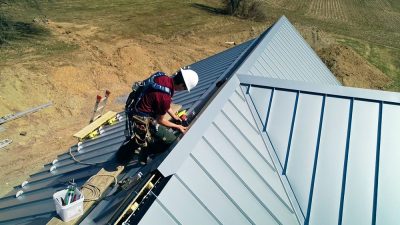
Every home ages — and small problems can quietly grow into expensive repairs. A home inspection checklist is your best tool to stay ahead of them. You don’t need to be a builder or engineer to protect your home’s health; you just need a plan and a few minutes every month.
This guide explains what to look for, how often to check, and how to keep simple notes that help you spot trouble early. Think of it as preventive care for your house — the same way regular checkups protect your health.
Why Regular Inspections Matter
Homes rarely fail suddenly. A cracked roof tile, a dripping pipe, or a blocked vent often gives warning signs long before major damage appears. Regular inspections help you:
- Save money by catching small issues early
- Avoid surprises when selling or refinancing
- Keep your family safe from hazards like mold, gas leaks, or faulty wiring
- Protect comfort and efficiency — a well-sealed, well-maintained home costs less to heat and cool
A consistent routine — guided by a Home Inspection Checklist — keeps you in control.
How to Organize Your Inspections
Before diving into details, divide your maintenance into simple time blocks:
- Monthly: quick visual checks of safety devices, leaks, and filters
- Seasonally: roof, gutters, windows, yard drainage, and weatherproofing
- Annually: HVAC service, chimney cleaning, plumbing and electrical review
- Every few years: radon testing, repainting, or system replacements
You can keep these reminders in your phone calendar or print them as a checklist to mark each season.
Monthly Checks: Small Steps That Prevent Big Problems
- Test smoke and CO alarms using the test button. Replace batteries if needed.
- Check for leaks under sinks, around toilets, and near the water heater.
- Replace HVAC filters to keep air clean and systems efficient.
- Inspect walls and ceilings for damp spots or peeling paint.
- Press “test/reset” on GFCI outlets in kitchens and bathrooms.
- Walk around the house to make sure drains and downspouts are clear.
These small tasks take less than half an hour and can prevent major damage.
Seasonal Checks: Preparing for Weather Changes
Spring and Fall
- Inspect the roof for missing shingles, rust, or sagging spots.
- Clean gutters and downspouts so water flows freely away from the foundation.
- Examine window seals and exterior caulking; replace any cracked or missing parts.
- Check grading so rainwater drains away from the house, not toward it.
- Test heating and cooling systems before extreme weather hits.
- Look for cracks in the foundation or damp spots in the basement.
A quick walkaround each season keeps your home ready for rain, snow, or heat.
Annual Checks: The Deep Inspection
- HVAC service: have a technician clean and inspect furnaces, air conditioners, and heat pumps.
- Chimney and fireplace: clean and check for creosote or cracks before winter use.
- Plumbing: inspect visible pipes for rust or corrosion; flush your water heater and check temperature settings.
- Roof and attic: look for leaks, insulation gaps, and signs of pests or mold.
- Basement and crawl space: ensure sump pumps work and no moisture is building up.
- Electrical panel: look for rust, burnt smells, or tripped breakers.
- Radon test: repeat every few years, especially after renovations.
These checks often benefit from professional help once a year.
Every Few Years: Long-Term Care
- Repaint or reseal exterior surfaces to protect against moisture.
- Replace old alarms every 10 years.
- Inspect decks and patios for loose boards or rusted screws.
- Review your records: note repairs, replacements, and future priorities.
- Plan ahead: major systems like roofs and HVAC units have predictable lifespans — schedule replacements before failure.
How to Take Notes and Track Progress
Keep a simple notebook or digital log. Write down:
- The date and area inspected
- What you observed (e.g., “small leak under kitchen sink”)
- How urgent it seems
- What action you took or plan to take
Over time, you’ll build a clear maintenance history that saves stress — and impresses buyers if you ever sell.
When to Call a Professional
You don’t need to climb on roofs or open electrical panels. Some tasks should be handled by licensed professionals:
- Annual HVAC service
- Roof inspections or repairs
- Gas appliance servicing
- Electrical upgrades
- Structural cracks or serious leaks
A homeowner’s job is to notice and document, not to perform risky repairs.
Final Thoughts: A Little Time, a Lot of Peace of Mind
A home inspection checklist isn’t just for new buyers or renovation projects — it’s a simple habit that keeps your home healthy.
Spending one hour each season walking through your property can prevent the stress of sudden leaks, cold rooms, or electrical issues.
You don’t need technical expertise — just curiosity, consistency, and a clear list.
Your home protects you every day. Taking a little time to inspect it is how you return the favor.








